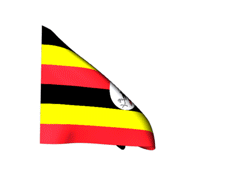About Us
Historically, Kyotera district was curved off Rakai District on July 1st, 2017. It comprises two counties of Kyotera and Kakuuto with nine Sub Counties and five town councils.In terms of topography, Kyotera District is located in the South Western part of Uganda, West of Lake Victoria lying between longitude 310E and latitude 0oS. Its southern boundaries are part of the international boundary between Uganda and Tanzania where there is Mutukula, a one stop border. It is bordered by Masaka district in the East and the South East, Rakai district in the West and Lwengo in the North. The District headquarters are located in Kasaali Town council after branching off two kilometers, off the Kampala - Mutukula road. It has a total area of 1,722 (sq km). It has a district council as the highest political authority with 31 members headed by the LCV Chairperson.
1.2 MISSION, THEME, OBJECTIVES
1.2.1 MISSION
A Transformed Kyotera Society from peasant to a Mordern and Prosperous country/District within 30 years.
1.2.2 THEME:
Sustainable industrialization for inclusive growth, employment and sustainable wealth creation.
1.2.3 VISION
Transform the Kyotera society from a peasant to a mordern and prosperous district by 2040.
1.2.4 OBJECTIVES
- To reduce the rate at which the poor depend on the environment 20%
- To improve solid waste management
- To provide and increase accessibility to safe water in all wards
- To increase accessibility to health facilities and services
- To increase household incomes by 5% through promotion of small scale enterprises
- To increase the access to quality social service
- To provide quality and timely advice and marketing skills to producers at all levels
- To promote good governance
- To increase ICT and technological application
- To encourage participatory planning at all levels
- To reduce rates of HIV/AIDS infection by 3%
- To increase revenue mobilization to meet planned service delivery levels.
1.2.5 DEVELOPMENT STRATEGIES
- Improving management and administration
- Improving financial resources mobilization, financial management and financial services
- Increasing quantity and building the capacity of human resources.
- Increasing stock and improving the quality of physical infrastructure.
- Promoting gender quality and equity through gender responsiveness in various government programs
- Facilitating access to critical agricultural production inputs

